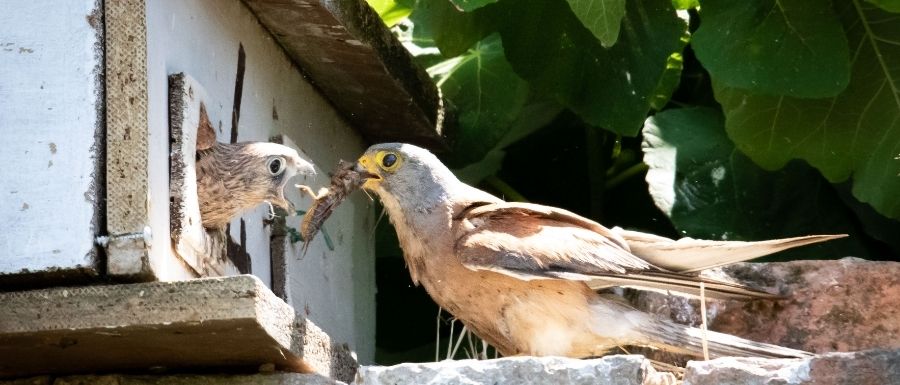Last autumn LIFE FALKON staff installed 200 nest boxes for Lesser Kestrels, scattered in the large agricultural area between the provinces of Mantua, Modena, Bologna and Ferrara (Italy), and another 110 boxes grouped in five nesting towers built by the project. This area hosts the most northerly population of Lesser Kestrels in Europe, as a representation of the fact that this species is able to colonize new latitudes because of global warming.
Since the return of the Lesser Kestrels from Africa around early April, FALKON staff have been monitoring whether the installed boxes were being used. Even though a low occupancy rate of the new structures was anticipated, at least four pairs of Lesser Kestrel occupied the boxes, raising one or more chicks, and they were not alone, in fact, two pairs of Eurasian Jay and a dozen of Little Owls have used the nest boxes as well.
Each of these boxes provides a safe nesting site for the Lesser Kestrel, and also supports the populations of several species of protected birds of the Po Valley, so that they may all have a secure and cosy place to raise their offspring.
The project LIFE FALKON transferred 30 Lesser Kestrel chicks from Matera to the nesting tower in the province of Bologna
And speaking of offspring, during the month of July, the project LIFE FALKON transferred 30 Lesser Kestrel chicks from Matera to the nesting tower “Matteo Griggio” in Baricella, in the province of Bologna.
The transfer, anticipated by the conservation action plan of the project, is not aimed at the repopulation of the species in the Po Valley, but at encouraging and accelerating the colonization of the nesting towers built by the project and to increase the proportion of colonies settled on stable buildings and in safe places.
Following the transfer the chicks were free to enter and exit the tower and get fed daily, but without getting into contact with the staff of LIFE FALKON. The project team also installed video cameras to observe the behavior and interaction between the transferred individuals and the wild kestrels who started to regularly visit the tower, attracted by the presence of the chicks (and of two adults no longer able to fly, who came from the Wildlife Recovery Center of Bitetto and were hosted in a large space adjacent to the tower).
On July 14, the first of the Matera chicks took flight in the Pianura Padana, followed by all the others once they reached the right age. After the first flight tests, the young Lesser Kestrels continued to regularly visit the tower to be fed, before leaving it by the end of August.
[Photo credit LIFE FALKON website]
